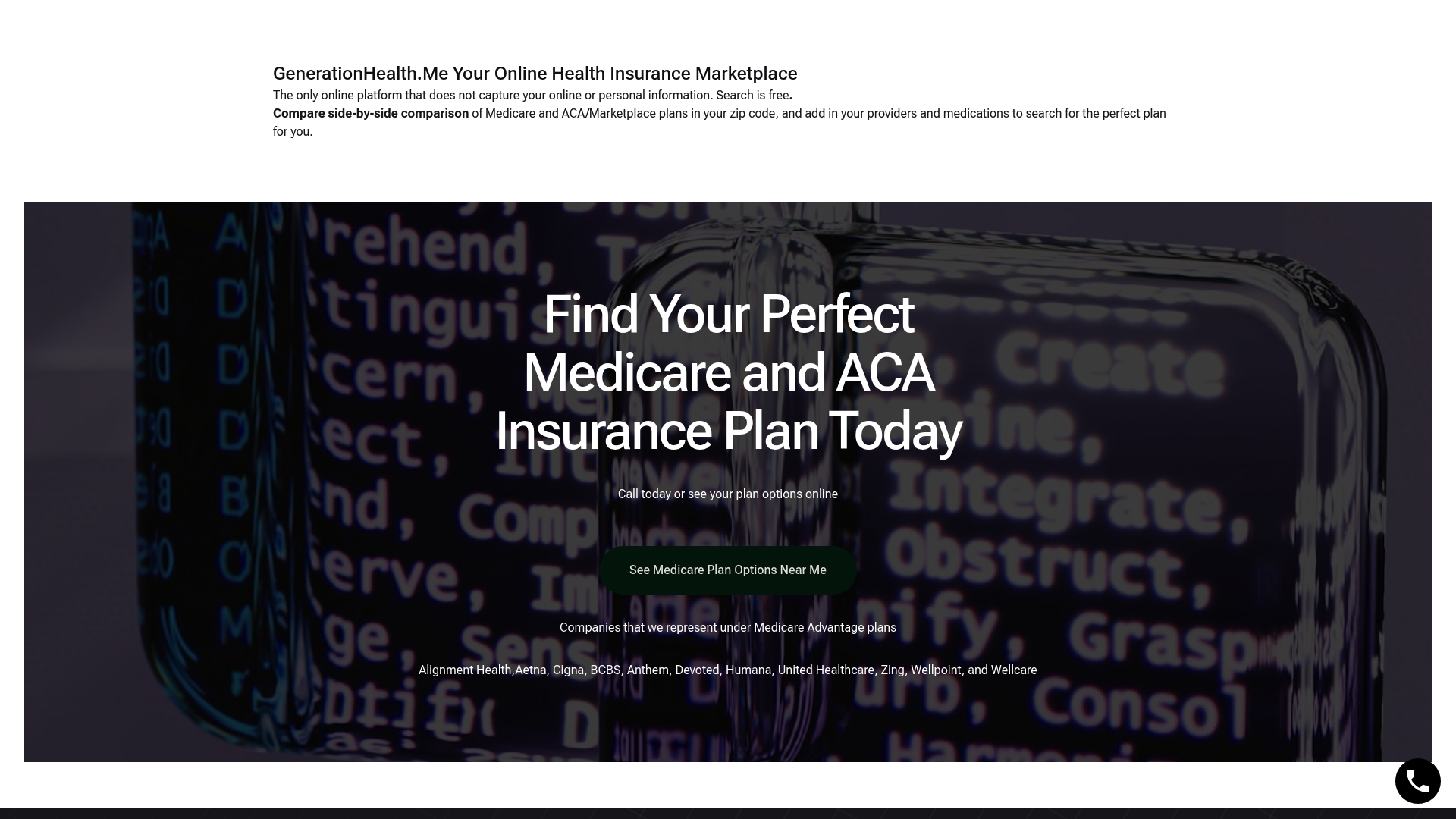Nearly 66 million Americans are covered by Medicare, yet many find the enrollment process confusing and stressful. Knowing when and how to sign up can impact your health coverage and even your finances. Clear guidance about who qualifies and how enrollment works helps you sidestep common mistakes, save money, and make the most of your Medicare benefits.
Table of Contents
- What Is Medicare Enrollment And Who Qualifies
- Types Of Medicare Plans And Coverage Options
- How The Medicare Enrollment Process Works
- Key Deadlines And Enrollment Periods Explained
- Costs, Penalties, And Common Mistakes To Avoid
Key Takeaways
| Point | Details |
|---|---|
| Eligibility Criteria | Medicare primarily serves individuals aged 65 and older, along with certain younger individuals with disabilities or specific medical conditions. |
| Enrollment Periods | There are multiple enrollment periods, including Initial, General, and Special Enrollment Periods, each tailored to different life circumstances. |
| Types of Coverage | Medicare is divided into parts, covering hospital stays, doctor visits, prescription drugs, and additional private plans like Medigap. |
| Avoiding Penalties | Failing to enroll during designated periods can lead to significant financial penalties, emphasizing the need for careful planning and timely registration. |
What Is Medicare Enrollment And Who Qualifies
Medicare is a federal health insurance program designed to provide comprehensive coverage for specific groups of Americans. Medicare enrollment is the process of signing up for health insurance benefits that primarily serve individuals aged 65 and older, as well as certain younger people with specific disabilities or medical conditions.
According to the Centers for Medicare & Medicaid Services, eligibility for Medicare depends on three primary factors: age, disability status, and specific medical diagnoses. Most people qualify automatically when they turn 65, but some younger individuals can also enroll if they meet special criteria. Understanding Medicare Eligibility Requirements Clearly provides more in-depth information about qualification standards.
The primary groups who qualify for Medicare include:
- Individuals 65 years or older
- People under 65 with certain permanent disabilities
- Individuals diagnosed with End-Stage Renal Disease (ESRD)
- People with Amyotrophic Lateral Sclerosis (ALS)
When it comes to enrollment, Medicare offers different entry points depending on your specific situation. Some people are automatically enrolled, while others must actively sign up during designated enrollment periods. How to Join Medicare Advantage can help you navigate the specific steps for joining Medicare and understanding your coverage options.
Types Of Medicare Plans And Coverage Options
Medicare offers a comprehensive range of health insurance plans designed to meet diverse healthcare needs. Medicare Parts are the fundamental building blocks of coverage, each addressing specific medical services and requirements. According to the official Medicare website, the core Medicare program is divided into several distinct parts that provide different types of medical coverage.
The primary Medicare plan types include:
Here’s a comparison of the main types of Medicare coverage:
| Medicare Plan Type | What It Covers | How Enrolled | Extra Benefits |
|---|---|---|---|
| Part A | Hospital stays Skilled nursing Hospice | Automatic or manual | No |
| Part B | Doctor visits Preventive care Outpatient services | Automatic or manual | No |
| Part C (Advantage) | Part A & B May add dental/vision Private plans | Manual | Often includes extras |
| Part D | Prescription drugs | Manual | No |
| Medigap (Supplement) | Cost-sharing Not prescription drugs | Manual | May lower out-of-pocket costs |
- Part A (Hospital Insurance): Covers inpatient hospital stays, skilled nursing facility care, hospice care, and some home health services
- Part B (Medical Insurance): Covers outpatient care, preventive services, medical supplies, and doctor visits
- Part C (Medicare Advantage): Private insurance plans that combine Part A and Part B coverage, often with additional benefits
- Part D (Prescription Drug Coverage): Helps cover the cost of prescription medications
What’s the Difference Between Original Medicare and Medicare Advantage? can help you understand the nuanced distinctions between these coverage options. Private insurance companies approved by Medicare offer additional plans like Medicare Supplement Plans (Medigap), which can help cover out-of-pocket expenses not included in original Medicare.
Beyond the standard parts, Medicare also provides specialized plans to address unique healthcare needs. These include Medicare Cost Plans and the Program of All-inclusive Care for the Elderly (PACE), which offer alternative ways to receive comprehensive medical coverage. The flexibility of these plans allows individuals to choose coverage that best matches their personal health requirements and financial situation.

How The Medicare Enrollment Process Works
Medicare enrollment is a structured process that requires careful timing and understanding of specific eligibility periods. According to the Centers for Medicare & Medicaid Services, most individuals have multiple opportunities to sign up for Medicare coverage, with each enrollment period serving different circumstances and needs.
The primary enrollment periods include:
- Initial Enrollment Period: A 7-month window surrounding your 65th birthday (3 months before, month of, and 3 months after)
- General Enrollment Period: January 1 to March 31 each year for those who missed their initial enrollment
- Special Enrollment Period: Allows enrollment outside standard periods due to specific life events like job loss or moving
Medicare Advantage Step Guide: Enroll Successfully offers detailed guidance on navigating these complex enrollment windows. The Social Security Administration manages the enrollment process, and most individuals are automatically enrolled if they’re already receiving Social Security benefits. For those not automatically enrolled, proactive registration is crucial to avoid potential penalties and coverage gaps.
Medicare enrollment isn’t a one-size-fits-all process. Depending on your personal circumstances—such as whether you’re still working, have employer coverage, or are retiring—the optimal enrollment strategy can vary significantly. Understanding these nuances can help you make informed decisions about your healthcare coverage and ensure seamless transitions between different insurance options.
Key Deadlines And Enrollment Periods Explained
Understanding Medicare enrollment deadlines is crucial for avoiding coverage gaps and potential financial penalties. According to the Centers for Medicare & Medicaid Services, Medicare offers multiple enrollment periods throughout the year, each designed to accommodate different personal circumstances and healthcare needs.
The most critical Medicare enrollment periods include:
- Initial Enrollment Period: 7-month window around your 65th birthday
- Annual Coordinated Election Period: October 15 to December 7 each year
- General Enrollment Period: January 1 to March 31 annually
- Special Enrollment Periods: Triggered by specific life events like job loss or moving
Understanding Why Enroll During Open Enrollment can help you navigate these complex timelines. Missing these critical windows can result in delayed coverage, permanent penalties, and potential gaps in healthcare protection. For Medicare Advantage and Part D plans, the Annual Coordinated Election Period is especially important, as it allows you to make significant changes to your existing coverage.
Each enrollment period serves a unique purpose. The Initial Enrollment Period is typically the most straightforward, automatically applying to most individuals turning 65. Special Enrollment Periods provide flexibility for those experiencing major life changes, ensuring that unexpected circumstances don’t leave you without necessary healthcare coverage. Carefully tracking these deadlines can save you significant money and prevent potential healthcare complications.
Costs, Penalties, And Common Mistakes To Avoid
Medicare enrollment comes with a complex financial landscape that can significantly impact your healthcare expenses. Enrollment penalties can dramatically increase your monthly premiums if you miss critical signup windows, making it crucial to understand the potential financial consequences of delayed registration.
Common Medicare enrollment mistakes include:
- Missing your Initial Enrollment Period
- Failing to sign up for Part B when first eligible
- Not understanding special enrollment exceptions
- Overlooking potential late enrollment penalties
- Choosing inappropriate coverage for your health needs
Step-by-Step Insurance Enrollment: Complete Guide provides detailed insights into navigating these potential pitfalls. According to the Centers for Medicare & Medicaid Services, late enrollment penalties can be substantial—Part B penalties can increase your premiums by 10% for each 12-month period you could have enrolled but didn’t. For Part D prescription coverage, the penalty is calculated by multiplying 1% of the national base beneficiary premium by the number of months you were without creditable prescription drug coverage.
Understanding your specific situation is key to avoiding costly mistakes. If you’re still working and have employer-provided health coverage, you might qualify for special enrollment periods that can help you avoid penalties. Always verify your unique circumstances, keep detailed records of your coverage history, and consider consulting with a Medicare specialist to ensure you’re making the most financially sound decisions for your healthcare needs.
Simplify Your Medicare Enrollment Journey Today
Navigating the complexities of Medicare enrollment can feel overwhelming, especially when facing critical deadlines, multiple plan options, and potential penalties. This article highlights common challenges like understanding enrollment periods, choosing between Medicare Parts, and avoiding costly mistakes. You deserve a clear path to secure healthcare coverage without the stress.
If you want to avoid missing important deadlines or selecting the wrong plan, explore our expert resources at Medicare Eligibility Archives and get detailed steps on how to join the right plan through How to Join Medicare Advantage Archives.

At GenerationHealth.me, we guide you through every step of Medicare enrollment with simple tools and trusted advice. Don’t risk penalties or coverage gaps when effective help is just a click away. Visit GenerationHealth.me now to compare plans, get instant quotes, and secure the coverage you need with confidence.
Frequently Asked Questions
What is Medicare enrollment?
Medicare enrollment is the process of signing up for Medicare health insurance benefits, primarily for individuals aged 65 and older, as well as younger people with specific disabilities or medical conditions.
Who qualifies for Medicare?
Individuals typically qualify for Medicare if they are 65 years or older, younger individuals with certain permanent disabilities, or those diagnosed with End-Stage Renal Disease (ESRD) or Amyotrophic Lateral Sclerosis (ALS).
What are the different types of Medicare plans?
Medicare offers several types of plans including Part A (Hospital Insurance), Part B (Medical Insurance), Part C (Medicare Advantage), Part D (Prescription Drug Coverage), and Medigap (Supplement) plans.
What are the key Medicare enrollment periods?
Key Medicare enrollment periods include the Initial Enrollment Period (a 7-month window around your 65th birthday), the General Enrollment Period (January 1 to March 31), and Special Enrollment Periods triggered by specific life events like job loss or moving.